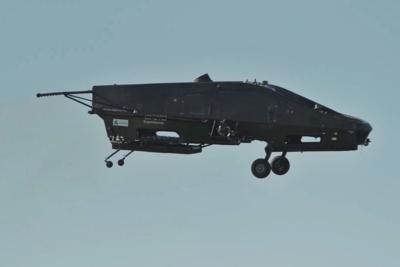Mon, Jan 27, 2020
Will Study Potential Uses For Piloted And Autonomous Light Aircraft
Boeing has signed an agreement with Israel-based Tactical Robotics to explore development of a ducted fan propulsion technology with potential uses for piloted and autonomous light aircraft.

Through a joint working group, the two companies will determine what opportunities may exist in developing, producing and marketing Fancraft-based vertical take-off and landing (VTOL) products, including the Cormorant. Due to its compact, Humvee-sized footprint, Cormorant can conduct emergency response missions such as delivering food, water and supplies during natural disasters or in combat environments. It can also carry up to four patients for medical evacuations.
“The relationship between Boeing and Israel goes back about 70 years, and during that period, Boeing has a long history of working in partnership with Israel’s technical and industrial sectors,” said Dennis D. Swanson, vice president, international sales, Boeing global sales and marketing. “This MoU with Tactical Robotics builds on Boeing’s commitment to developing and investing in innovative technologies that lead to safe, reliable aircraft around the world.”
Rafi Yoeli, CEO of Tactical Robotics’ parent company Urban Aeronautics, said, “Cormorant represents the first in a family of vertical take-off and landing aircraft that can fly and land where no other aircraft can. We can think of no better partner than Boeing to help us develop this product and utilize the Fancraft technology to its full potential.”
Aviation ducted fan technology uses a fan mounted in a cylindrical duct to produce thrust. This arrangement can efficiently enhance airflow velocity and pressure when compared to an open rotor. There are also notional safety advantages to the technology when compared to unshielded blades on traditional rotorcraft. Fancraft technology improves stability, payload, speed and endurance when compared to conventional ducted fan configurations.
(Tactical Robotics image provided with Boeing news release)
More News
Takeoff Roll The process whereby an aircraft is aligned with the runway centerline and the aircraft is moving with the intent to take off. For helicopters, this pertains to the act>[...]
“We’re proud of the hard work that went into receiving this validation, and it will be a welcome relief to our customers in the European Union. We couldn’t be mor>[...]
"Aircraft Spruce is pleased to announce the acquisition of the parts distribution operations of Wag-Aero. Wag-Aero was founded in the 1960’s by Dick and Bobbie Wagner in the >[...]
IDENT Feature The special feature in the Air Traffic Control Radar Beacon System (ATCRBS) equipment. It is used to immediately distinguish one displayed beacon target from other be>[...]
Aero Linx: Pararescue Air Force Pararescuemen, also known as PJs, are the only DoD elite combat forces specifically organized, trained, equipped, and postured to conduct full spect>[...]
 ANN's Daily Aero-Term (05.10.24): Takeoff Roll
ANN's Daily Aero-Term (05.10.24): Takeoff Roll Aero-News: Quote of the Day (05.10.24)
Aero-News: Quote of the Day (05.10.24) Aero-News: Quote of the Day (05.11.24)
Aero-News: Quote of the Day (05.11.24) ANN's Daily Aero-Term (05.11.24): IDENT Feature
ANN's Daily Aero-Term (05.11.24): IDENT Feature ANN's Daily Aero-Linx (05.11.24)
ANN's Daily Aero-Linx (05.11.24)



